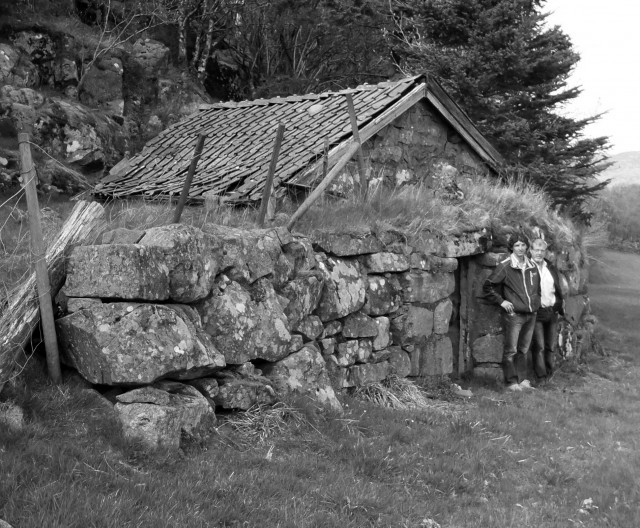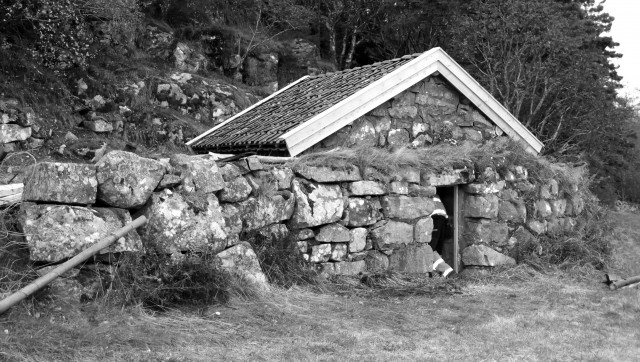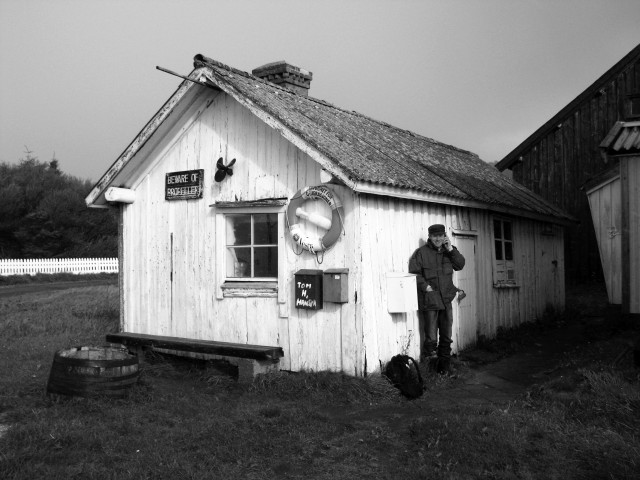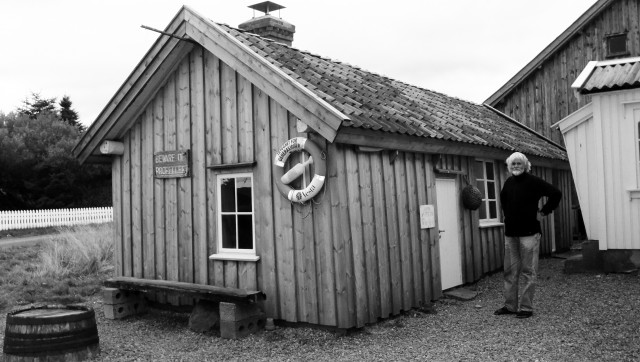Grants UKL
 Helge Kalleberg and Harry Kalleberg outside the root cellar before the restoration in 2012.
Helge Kalleberg and Harry Kalleberg outside the root cellar before the restoration in 2012.
The landowners within a selected cultural landscape may apply for grants for various activities and undertakings. One can apply for means to restore or maintain cultural monuments, listed buildings and old culture-land. The project can also finance various events or actions to enhance dissemination.
Restoration and maintenance are mainly done by the landowners themselves, with the aid of various tradespeople where it is needed.
The rehabilitation of the root cellar at Senegre and the inn at Jøllestø are supported by selected culture landscape.
 Carpenter Trond Kolnes on his way into the restored root cellar in 2013.
Carpenter Trond Kolnes on his way into the restored root cellar in 2013.
The root cellar at Senegre
In earlier times it was common to have a root cellar for the storage of potatoes, root vegetables and other foodstuffs. At Senegre they have restored a special root cellar. It’s got a tiled roof and is joined into a stone wall.Root cellars can be constructed in different ways. They are normally buried in the ground, with cemented walls and roof completely surrounded by earth. Common to them all is that they have a floor that makes direct contact with the soil. The moisture and temperature of the earth stabilises the climate in the cellar, so that it is cool in the summer and frost-free in the winter.

The inn at Jøllestø
An inn was established at Jøllestø in the 1770s, and the port at Jølle made it possible to travel westward by boat. Jøllestø was therefore a hub in the traffic going between east and west.Before the breakwater was built, bad weather could often lead to boats having to stay in harbour. For the inn this was good news, as the travellers needed both food and shelter. The inn was in business until the last half of the 1800s when the road was moved and the traffic disappeared.
